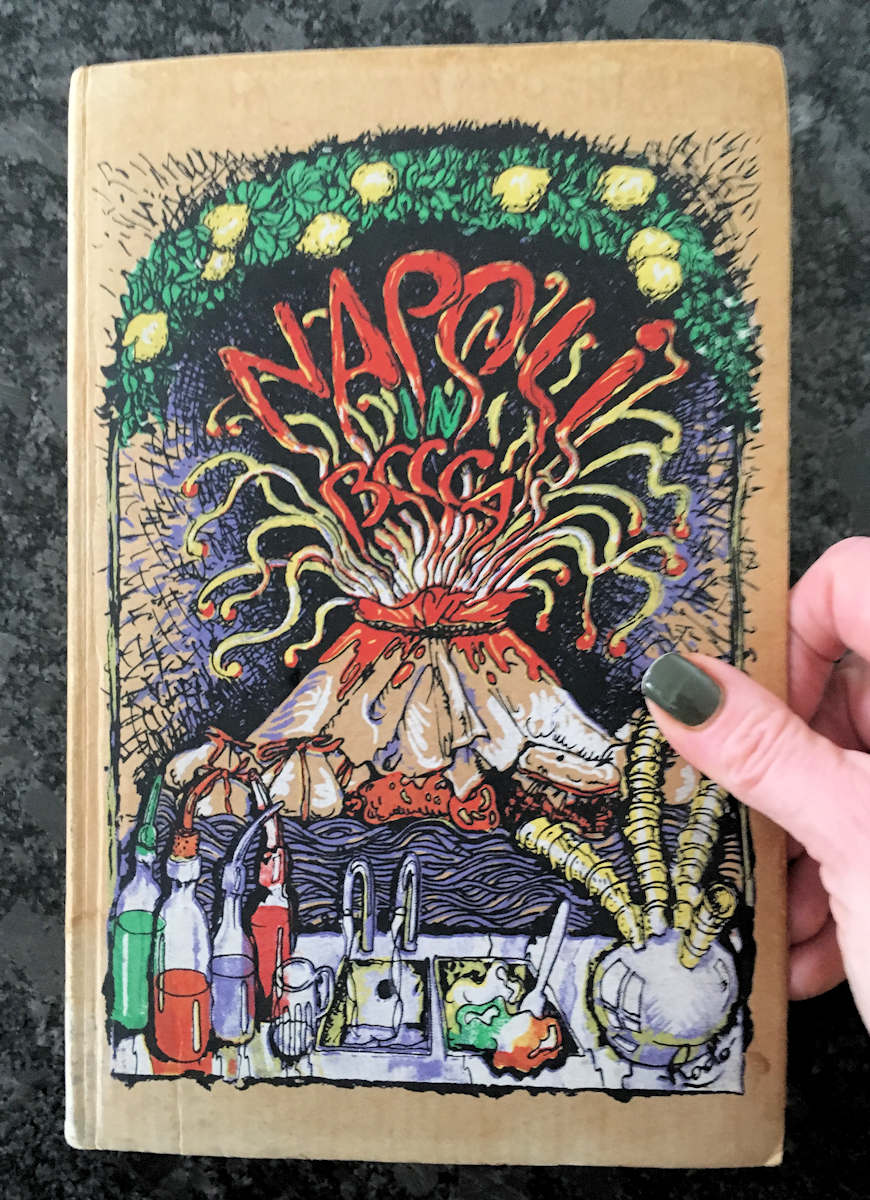Authentic ragù Bolognese is cooked for hours and served with chunky pasta shapes, not spaghetti. Spagbol, begone! This the real deal.

Napoli in Bocca
I got this wonderful book from my Italian mother-in-law. It’s called Napoli in Bocca, written by Antonella Santolini, published in 1980 and it looks like from early 1900s.
Quaint doesn’t even start to describe it: the paper is thick dark parchment, the recipes appear handwritten, there are lovely sketches illustrating the book and the language of the English versions is simply beautiful.
The recipes are authentically weird: you know it must be a true indigenous dish if it doesn’t resemble its bastardised pan-European version in the ingredients’ list.
Pizza features peeled, sliced tomatoes – no faffing about with sauce. Spaghetti is really called vermicelli. There’s no minestrone because ‘minestra’ simply means ‘soup’, but there is a tripe soup and a fried pork soup – who knew?
All we know about Bolognese is wrong
Carne al ragù – we are not in Bologna anymore, Toto – sounds astonishing to a non-Italian reader whose concept of a spag bol is pasta drowned in what is effectively a burger dispersed in bad tomato sauce.
Ragù de Napoli does not contain meat (you read right). A hefty chunk of beef is cooked for hours with aromatics then removed, leaving richly flavoured sauce used to flavour (not smother) pasta served as a starter. The meat is served for the main course. Naturally.
That’s the right Italian way we see and approve but follow the worse way: a bucketful of pasta swimming in sauce, and eaten as a main course.
My recipe below is a halfway house, without too dramatic a change: keep the meat mince in but follow the flavouring and method instructions.
It comes out supremely tasty. See, approve and follow.
Soffritto, so essential
Soffritto means ‘gently fried mix’ and it is the starter kit to Italian sauces: onion, carrot and celery, finely diced and sweated in oil before anything else happens.
You might think it is an unnecessary chore, also: I don’t want carrots in my Bolognese, but you’d be wrong. I’ve tried without and it was like a burger dispersed in tomato sauce (see above).
Instead of celery though, which is annoying because you need to buy an enormous stalk and only use half a rib with the rest always going wasting, I sometimes use a broccoli stem. That is also one of the cardinal English food waste sins because we always bin it.
So using it in soffritto will have a double-good waste-limiting effect.
Beef or pork?
Since we’re going this Italo-English (just like The Weather Man) way, mince is the base of the sauce. And I say the best results you’ll get with both beef and pork in the pot, with the emphasis on the beef as it’s more flavourful.
But I would also say ground venison will be good to use too, as well as game birds as long as there is enough fat in the meat.
Red wine imperative
Italian chefs and food writers are easily offended, which our own Mary Berry experienced acutely.
It’s actually fine to use white wine in a Bolognese sauce, if the meat you use is Italian sausage. With beef the tendency is to go with red. And it gives the sauce nicer colour anyway.
Other liquids to go in the pot include good stock and tomato passata, or chopped tomatoes. Plus seasoning and herbs, and then it is all about cooking it slowly and for ever.
There is absolutely no such thing as ‘quick authentic Bolognese’ – that’s the ultimate oxymoron.
The amount of about 3-4 tablespoons of the sauce per person gives the perfect balance between Italian sparsity and British overload. The pasta tastes fantastic but you can hardly see the sauce or the meat – which is the whole point.
What pasta shape?
Contrary to the spag bol myth, spaghetti is the wrong pasta shape to use with meaty ragù sauce. General Italian guidance says that chunky, robust sauces should be used with chunky, robust shapes such as rigatoni or tagliatelle. Spaghetti and other long skinny pasta match lighter, creamy or seafood sauces better.
And so, there we have it: tagliatelle al ragù or rigatoni alla Bolognese. That’s what really hides in the roots of the English spagbol hybrid. Buon appetito!
More pasta recipes
Carbonara pasta bake with bacon, Pecorino and egg yolks. No cream added and only a little cheese make the dish skinnier but just as delicious.
Pasta with red and yellow peppers cooked down to sweet and silky sauce, also known as pasta peperonata. Who needs tomatoes?
Bucatini pasta with creamy Alfredo sauce, peas and spinach. Bucatini is thick spaghetti-like pasta shape and it goes well with Alfredo sauce, a sprinkling of Parmesan and a handful of peas.